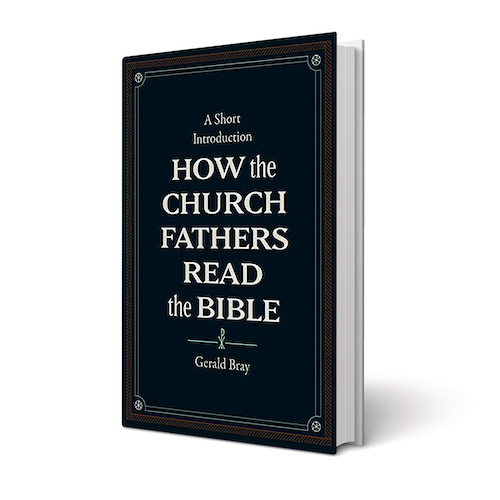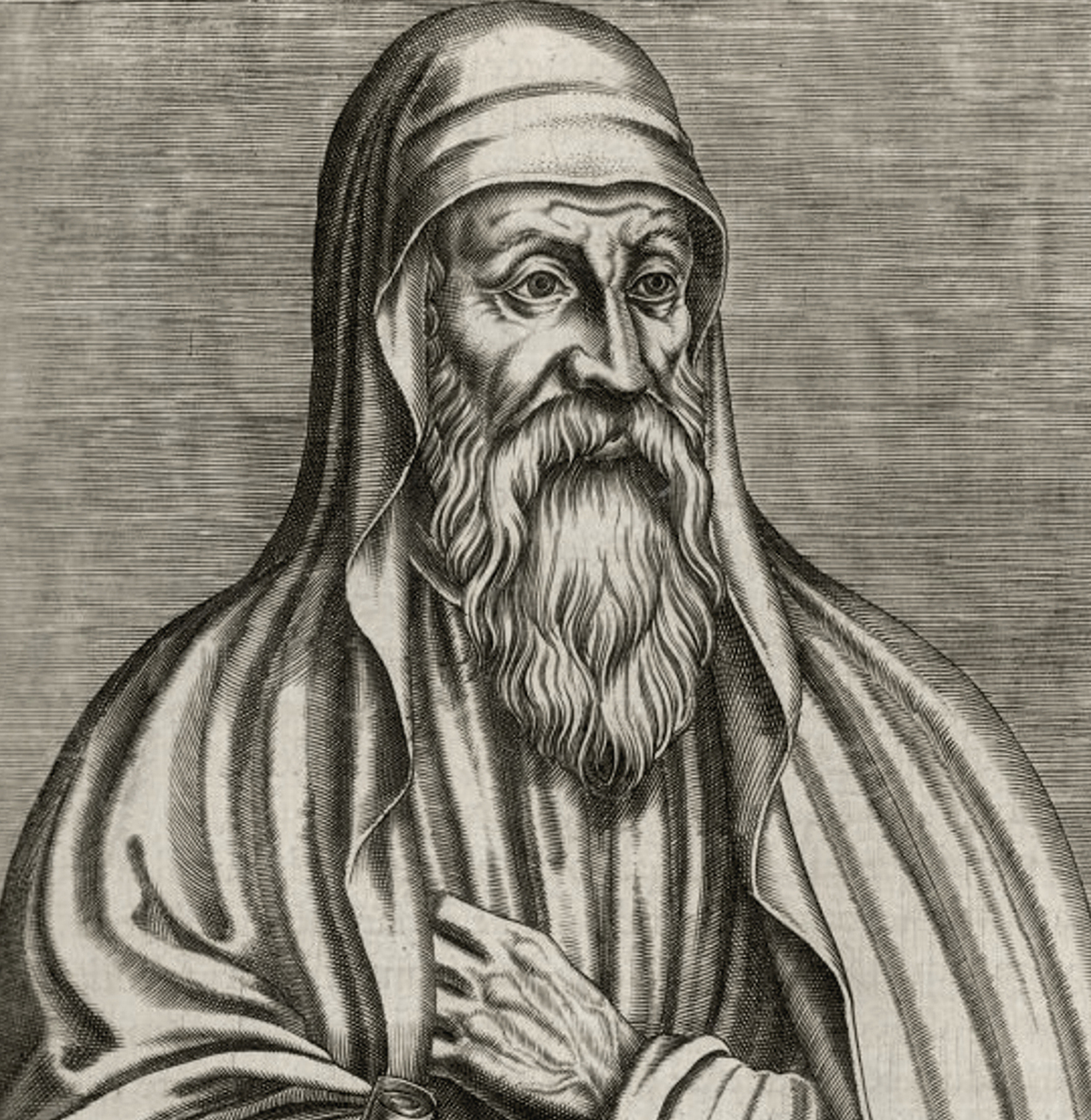Gerald Bray enjoys a rich résumé: research professor of divinity at Beeson Divinity School, Birmingham, Alabama, where he taught from 1993 to 2006; ordained minister of the Church of England; director of research for the Latimer Trust. He has published on the patristic period and wider matters of church history, systematic theology, and Anglicanism. In How the Church Fathers Read the Bible, Bray does the church further service by providing an imaginative and insightful overview of the approach of the church fathers to scripture. He does so in an engaging and incisive way by telling the story of the fathers from an angle rarely discussed, opening up these foundational figures in new ways, neither eulogizing the patristic period nor underplaying their continued importance for today. He reminds us of some important insights with a few unexpected truths along the way.
The biblical exegesis of the church fathers is often dismissed as fanciful or based on poor translations. A CofE minister and research scholar sets the record straight and reintroduce the church to the earliest interpretations of Holy Writ.

By Gerald Bray
(Lexham Press, 2022)
The first chapter, entitled “What Is Patristic Biblical Interpretation,” focuses on who the church fathers were and what Bible they actually used, and reminds us of several important facts. The church fathers are regarded as authoritative in some way yet may appear daunting or impenetrable. This is especially so in respect of what appears at times rather spectacular approaches to biblical interpretation. Yet once we understand their cultural and historical context and their relationship to the text of scripture, we are better equipped to appreciate the fathers’ approach and learn lessons for today. “Students of the early church have come to appreciate just how central the Bible was to its concerns,” writes Bray, “and that, whether we agree with the fathers or not, the interpretative principles that guided them must be taken seriously if we are ever to understand how Christianity developed.”
Bray spends significant time, probably too much, reflecting on the actual nature of the Bible in the hands of the fathers. The key point he is seeking to make is that they simply did not possess the same Bible most of us do and that we need to take that into account in assessing the manner in which they read and interpreted the text. Few of them were familiar with Hebrew, and they relied upon the Greek translation of the Old Testament, the Septuagint (LXX), rather than the Hebrew Bible. Bray helpfully points out the extent to which the LXX contains features not found in any original Hebrew text. Throughout the book, he is skillful at dropping into the narrative interesting, if little known, facts. In the LXX, the books of the Torah are known by the titles that we recognize today, whereas in the Hebrew manuscripts they are known simply by their opening word. The LXX also contains the Apocrypha, though that name was first applied by Jerome in the fourth century. Jeremiah is much shorter in the LXX than in the Hebrew, whereas Esther and Daniel are longer, presumably due to later additions. There are various issues of categorization, and the Psalms are numbered differently. The inadequacies of the LXX did come to be recognized, but that was the text that, for the most part, the fathers had before them. In contrast, the New Testament manuscripts were a little easier to collate. Bray also draws attention to the format of the Bible, not least the fact that there was not a single “book” (“the Bible”) but various codices, as well as a lack of verse and chapter divisions. Most likely, even “great men like Augustine probably did not possess a complete set of codices, at least not personally.” In other words, the fathers did not have before them the same books in the same form most of us have in our Bibles.
Origen was the first Christian to write a hermeneutical treatise, developing three senses in interpretation that corresponded to the division of body, mind, and spirit.
In his discussion as to who exactly the church fathers were, Bray makes the point that many of those who were later declared doctrinally heterodox (Arius, Pelagius) were seen as competent and orthodox Bible interpreters in their day. Complicating the picture are significant and brilliant figures such as Origen who were later condemned. The complexity of the period is further illustrated when we’re reminded that schismatics such as the Donatist Tyconius found his interpretative methods accepted by the great opponent of Donatism, St. Augustine!
The Problem of Allegory
The patristic period traditionally extends from the second century to the fifth. Bray is willing to include Gregory the Great (ca. 540–604) and the Venerable Bede (ca. 673–735) among the fathers, which may be a stretch. What Bray is telling us, however, is that when it comes to interpretations of the scriptures, the boundaries of the fathers have to be extended in terms of both traditional orthodoxy and geography. Some parts of his broader exploration of the fathers in the Greek East and the Latin West are probably better suited to a basic early church history than this volume on scripture, but that is a minor quibble.
The second chapter, entitled “The Clash of Worldviews,” is in my view the weakest. We are given an extensive and admittedly interesting treatment of the way pagans, Jews, and Christians clashed in their interpretations of both Bible and philosophy. But this rather lengthy excursus, though important, only delays our arrival at the heart of the matter under debate, the way the church fathers interpreted and handled scripture.

When we finally arrive at this, however, in chapters 3 and 4, we are not disappointed. According to Bray, Origen was the first Christian to write a hermeneutical treatise, developing three senses in interpretation that corresponded to the division of body, mind, and spirit. The bodily sense, perhaps the most obvious meaning of a passage, serves primarily to convict the reader of sin. The moral sense was given to enable the Christian to grow in virtue so that we may see Christ. The challenge was to the soul to seek higher things. To some degree, both these senses were inadequate and required the spiritual sense, to enable the reader to appreciate and understand that which was revealed only to those who possessed the indwelling Spirit. A fourth sense was later added by John Cassian (360–435), effectively dividing the spiritual into two parts, one related to this life and the other to the life to come.
As Origen and others after him sought to harmonize these different senses, problems became evident. The particular danger of the spiritual sense was obscure and fanciful interpretations. Bray says that Origen “let his imagination run away with him” in his detailed spiritualization of the people, the animals, and the rooms on the ark, for example. It was this approach to spiritualization and the use of allegory in interpretation that have come to characterize how we view patristic readings of the Bible. That does not mean, writes Bray, that they lack wisdom and value.
Origen and the fathers who followed his lead may have misinterpreted their texts and indulged in fanciful comparisons that fail to meet the standards of interpretation that we would now expect, but there is usually a kernel—and often much more than that—of truth in what they have to say, and if that kernel can be rescued and recycled, it is worth doing.
There is nevertheless an increasing reluctance to embrace the allegorical method as employed by Origen but without rejecting the approach completely. Bray gives the example of Eustathius of Antioch (died ca. 360), who critiqued Origen’s allegorization of 1 Sam. 28:1–25 (Saul and the Witch of Endor) on the grounds the passage made perfect sense as it stood. The Latin father Augustine, of course, was not beyond developing allegorical or spiritualizing interpretations, but Bray argues that “he was neither a literalist nor an allegorist but a pastor”—a useful reminder of one of the primary purposes of interpretation in the first place.
At this point one is desperate for some practical examples of the fathers at work. How exactly did they interpret particular passages? Bray offers us 10 examples, and we can focus on one, the aforementioned 1 Sam. 28, when the Witch of Endor appears to summon Samuel up out of the earth. Origen wondered how it was possible for a medium to have such power over a prophet. He believed that it was indeed Samuel, for to think otherwise would doubt the accuracy of the Bible, but it was hard to explain why Samuel was in hell. For Origen, the story was ultimately that “there was nowhere that did not need the saving presence of Christ, and the prophets went to hell in order to proclaim that message.” Justin Martyr noted that Satanic influence over us did not end at death, Tertullian that the power of the witch to summon up Samuel was real but unique. Origen’s view prevailed, and was taken even further by Augustine, who suggested that God could indeed send the dead to speak truth to the living.

A Journey Worth Taking
All told, Bray is honest and realistic in his assessment of the fathers. Early on he notes that the “fathers were honored for their teaching, not for their method(s) of interpreting the Bible.” Yet he seriously helps us to understand the fathers as well as the strengths and weaknesses of their interpretive method. He notes that it “seems strange to modern readers that some of the best-known parts of the Bible were often passed over by ancient commentators,” observing that the early fathers “saw little need to write commentaries on the Old Testament books of Samuel and Kings … not because the books were rejected as Scripture but because their meaning was thought to be too obvious to need further explanation.”
This is the strength of Bray’s short introduction: its breadth and depth of insight. He does not gloss over difficulties but helps us along the way in our journey with the fathers. For that we should be most thankful to him. This was a fascinating read: the fathers from a new and different perspective.
Bray sums up his work by reminding us of the basic principles and truths the fathers embraced: They understood the place, role, and importance of scripture. They were not perfect, but we have much to learn from them, nevertheless.




